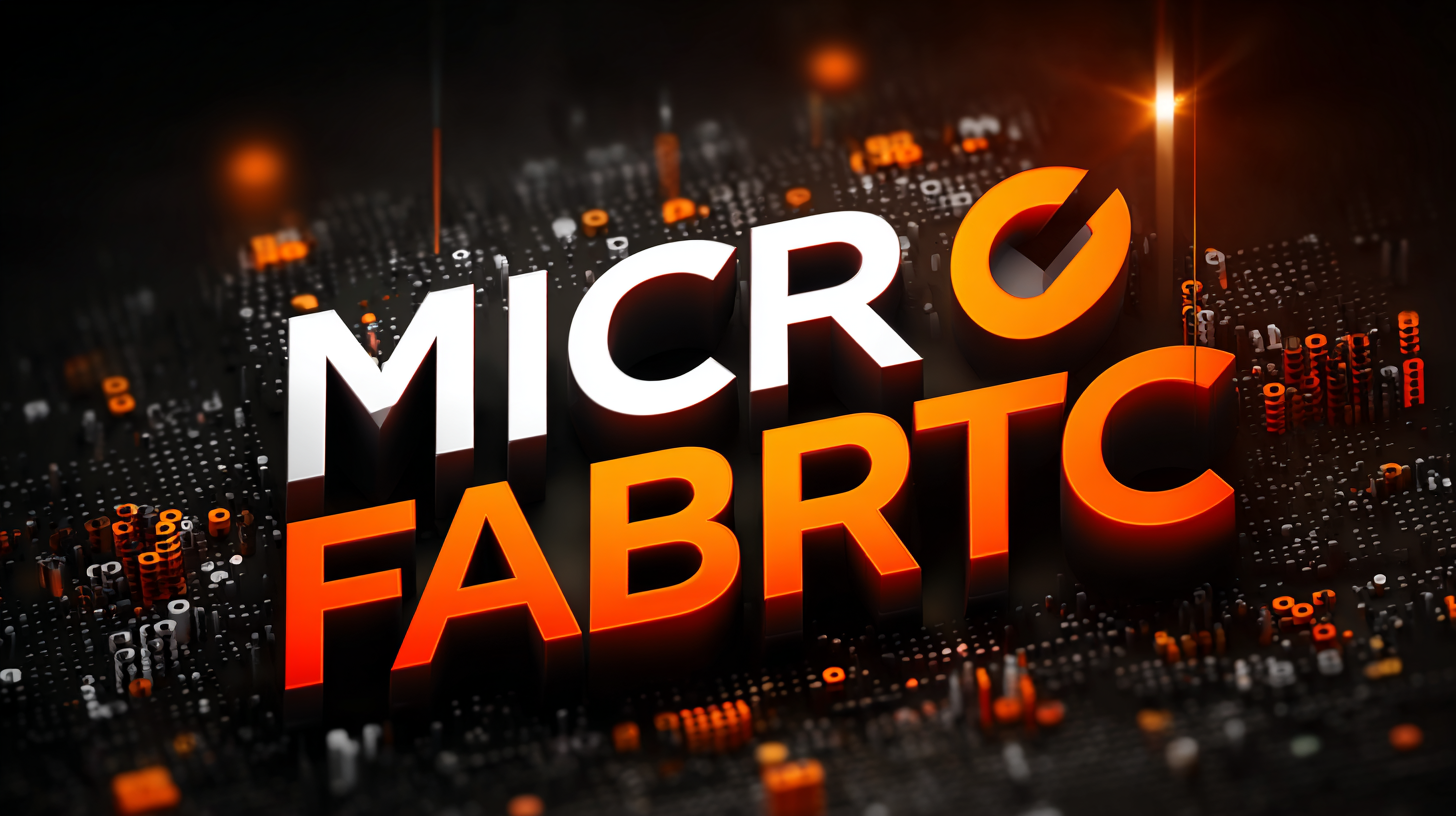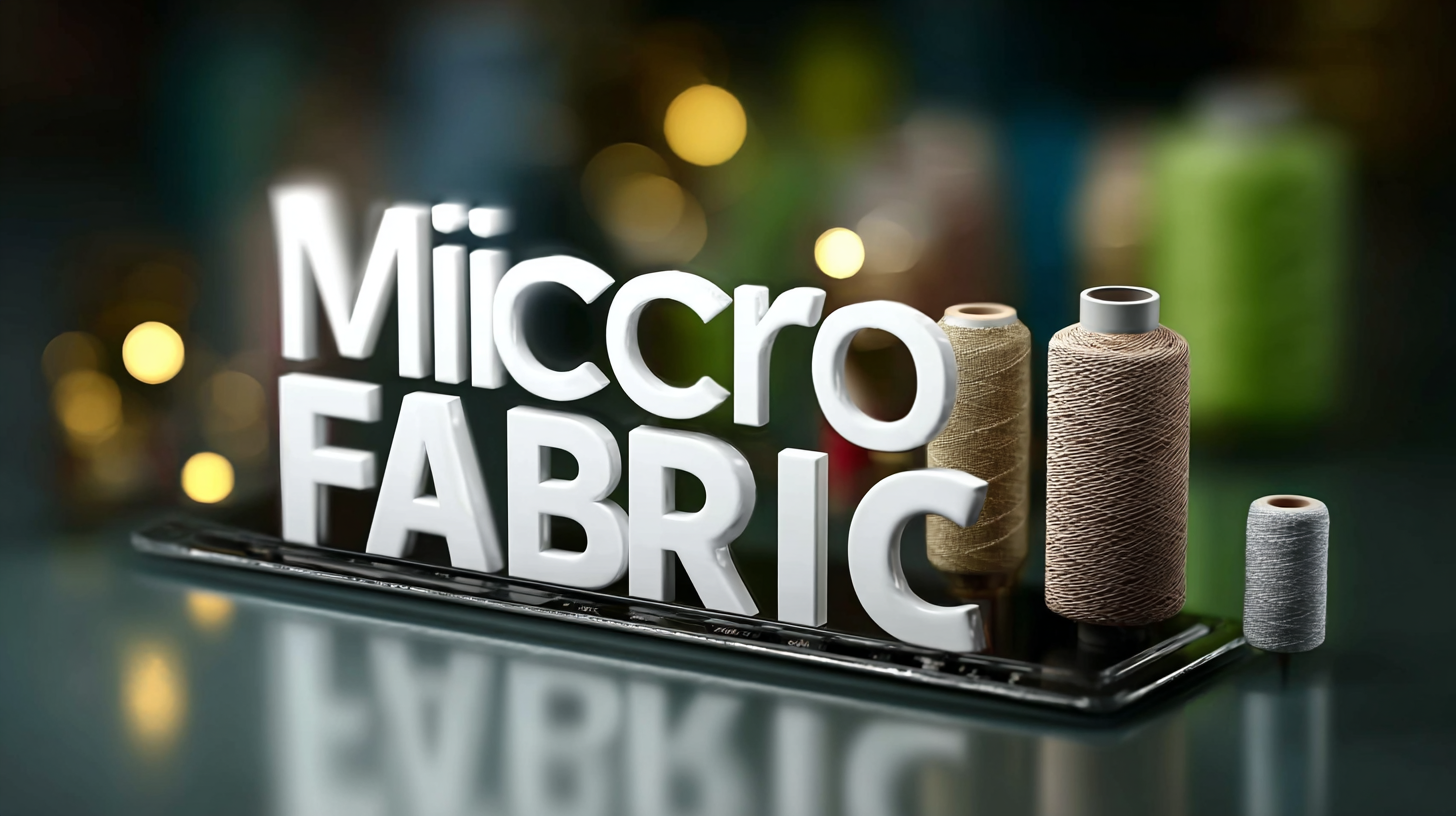In today's competitive textile industry, sourcing the best micro fabric is crucial for manufacturers aiming to meet evolving consumer demands and maintain high production standards. As highlighted in the latest report from the Textile World Association, the micro fabric market is projected to grow at a compound annual growth rate (CAGR) of 7.2% over the next five years, driven by its lightweight properties, superior durability, and versatility in applications ranging from apparel to home textiles. Additionally, a survey conducted by Fabric Technology Insights revealed that 78% of brands prioritize eco-friendly sourcing without compromising on quality, underscoring the importance of adhering to industry production standards. This ultimate checklist will explore key metrics and emerging trends that industry professionals must consider to effectively source the best micro fabric.

Micro fabric has gained increasing attention in the textile industry due to its unique characteristics and versatile applications. One of the key traits of micro fabric is its ultra-fine fibers, typically measuring less than one denier. This results in a soft, lightweight material that offers superior breathability and comfort, making it ideal for activewear and apparel. Additionally, the closely woven structure of micro fabric enhances durability and resistance to wear and tear, allowing manufacturers to provide long-lasting products that meet consumer demands.
When assessing the quality of micro fabric, several metrics come into play. The fabric's GSM (grams per square meter) is a critical measure, as it indicates the density and weight, influencing both quality and performance. Also, evaluating the fabric's water-repellency and moisture-wicking abilities can guide you in selecting the appropriate micro fabric for specific applications, from outdoor gear to casual wear. Lastly, colorfastness and pilling resistance are important characteristics that ensure the fabric maintains its appearance and functionality over time, achieving a balance between aesthetics and practicality. Understanding these key characteristics and quality metrics will empower textile professionals to source the best micro fabric for their needs.
In the rapidly evolving world of textile manufacturing, understanding the latest trends in micro fabric is essential for successful sourcing. One of the key trends is the increasing demand for sustainable materials. As consumers become more environmentally conscious, manufacturers are focusing on using recycled fibers and eco-friendly dyes to meet these demands. This shift not only enhances brand reputation but also aligns with the global push for sustainability in fashion and textiles.
Another trend shaping the micro fabric landscape is the rise of innovative technology in production processes. Automation and advanced weaving techniques are leading to higher efficiency and better quality control, allowing suppliers to produce fabrics that are not only durable but also aesthetically pleasing. Additionally, the incorporation of smart textiles, which can respond to various stimuli, is gaining traction. This fusion of technology and fabric opens doors to new applications in industries ranging from athletic wear to healthcare, positioning micro fabrics at the forefront of contemporary textile solutions. It's crucial for sourcing professionals to stay informed about these trends to leverage new opportunities and make informed purchasing decisions.
| Metric | Importance Level | Latest Trends | Best Practices |
|---|---|---|---|
| Fabric Weight | High | Lightweight options gaining popularity | Opt for fabrics between 150-200 GSM for versatility |
| Durability | Critical | Recycled fabrics with enhanced durability | Look for abrasion-resistant microfibers |
| Moisture Wicking | High | Increase in demand for activewear usage | Prioritize fabrics with advanced moisture management |
| Sustainability | Essential | Shift towards eco-friendly production methods | Source from suppliers with sustainable certifications |
| Cost Efficiency | Moderate | Increasing competition leading to better pricing | Evaluate price per yard and total cost to avoid hidden fees |
 When sourcing high-quality micro fabric, evaluating supplier capabilities is paramount. A world-class factory possesses several key characteristics that set it apart from the rest. First and foremost, advanced technology is crucial. Factories equipped with the latest machinery and automation not only ensure precision in production but also enhance efficiency, reducing lead times. This technological edge allows for consistent quality and the ability to respond swiftly to market trends, making it essential to visit potential suppliers in person to assess their equipment and procedures.
When sourcing high-quality micro fabric, evaluating supplier capabilities is paramount. A world-class factory possesses several key characteristics that set it apart from the rest. First and foremost, advanced technology is crucial. Factories equipped with the latest machinery and automation not only ensure precision in production but also enhance efficiency, reducing lead times. This technological edge allows for consistent quality and the ability to respond swiftly to market trends, making it essential to visit potential suppliers in person to assess their equipment and procedures.
Another vital aspect to consider is the supplier’s commitment to sustainability and ethical practices. A factory that embraces eco-friendly practices and adheres to ethical labor standards not only contributes to a better environment but also aligns with the increasing consumer demand for responsible sourcing. Certifications such as ISO, OEKO-TEX, or GOTS can indicate a factory's dedication to quality and sustainability. Furthermore, the responsiveness of the supplier in communication and their willingness to collaborate on product development should not be overlooked. A world-class supplier fosters a partnership rather than a transactional relationship, ensuring a seamless sourcing experience and long-term success in the fabric market.
As sustainability becomes a crucial consideration in textile sourcing, eco-friendly options for micro fabrics are gaining prominence. These fabrics, often used in activewear and home textiles, can now be sourced from recycled materials or produced through sustainable practices. Innovative methods such as using post-consumer plastics or organic fibers not only reduce environmental impact but also offer consumers a guilt-free choice. When selecting micro fabrics, it's essential to look for certifications that validate these sustainable practices. Certificates such as Global Recycled Standard (GRS) and OEKO-TEX Standard 100 ensure that the materials are not only eco-friendly but also safe for human health.
Another trend in the realm of micro fabrics is the increasing popularity of biodegradable options. Brands are now investing in research to develop micro fabrics that can decompose naturally without leaving harmful residues. This shift towards biodegradable alternatives aligns with a broader movement towards circular fashion, encouraging manufacturers to design with the end of the fabric's life in mind. By demanding transparency and sustainability in the sourcing process, consumers can contribute to a more responsible fashion industry while still enjoying the benefits of high-performance micro fabrics.
The micro fabric industry is experiencing significant shifts in demand and pricing trends, reflecting broader market dynamics. The global towel market, for instance, is projected to be valued at $11.44 billion in 2024, with an anticipated growth to $11.89 billion by 2025 and reaching approximately $16.59 billion by 2032. This trend indicates a robust demand for high-quality textiles, particularly micro fabrics, known for their soft texture and absorbent properties which align with consumer preferences for comfort and functionality.
Furthermore, the fiber laser market is also on an upward trajectory. By 2024, the global fiber laser market is expected to reach $3.96 billion, with projections indicating a growth to $10.12 billion by 2033. Such expansions reveal an increasing investment in technology that enhances fabric production and performance, including micro fabrics. Coupled with these statistics, the ongoing innovation in textile technology can significantly affect sourcing strategies, emphasizing the need for a comprehensive understanding of market demands and pricing fluctuations to remain competitive in the micro fabric sector.

